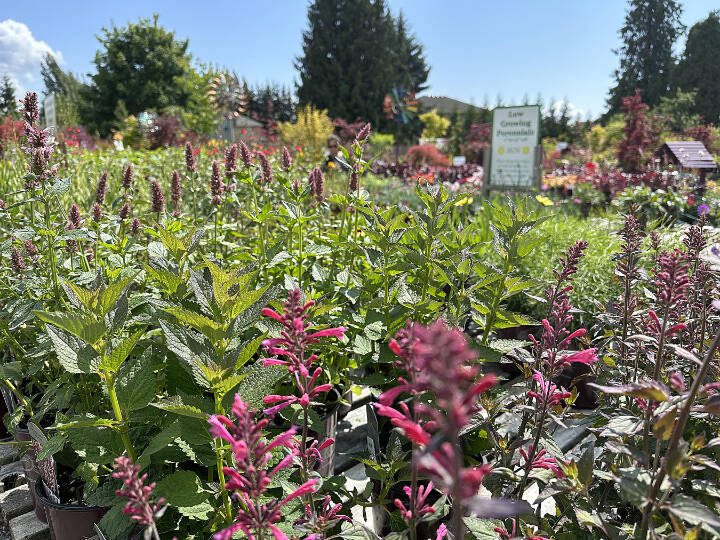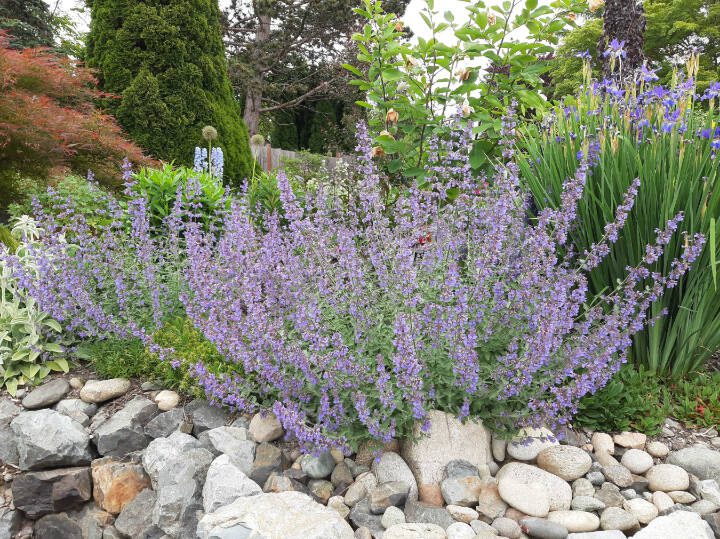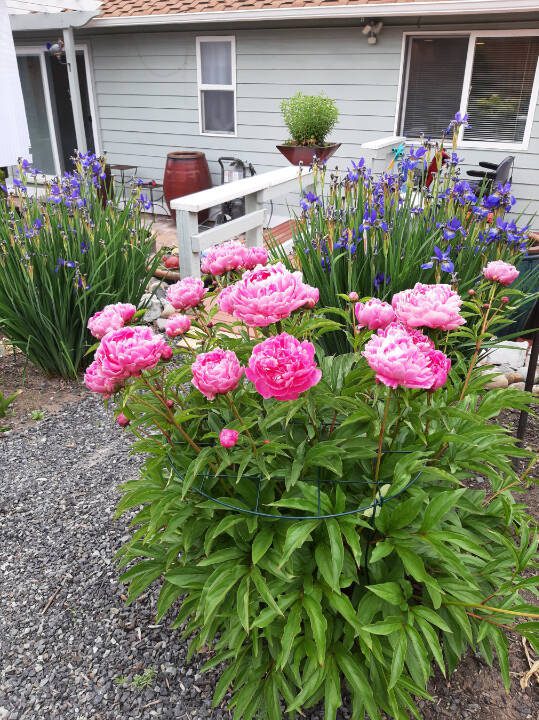There is no shortage of things to do in the garden in the month of June. Hedges need to be pruned, warm-season veggies should be planted, spring-blooming plants — such as forsythia, heather and rhododendron — should be deadheaded, weeds of course need to be controlled, it’s time to start thinking about watering, and all those annuals we planted in May need to be fed. But one of the most important tasks for every gardener is to keep planting. There are always holes to fill in and beds to rejuvenate, and in June the best choices usually come from the perennial department of the garden center.
It never ceases to amaze me how the selection of perennials increases once we move into June. For example, in April and May, you might only see a few varieties of heuchera or lavender, but now you can choose from dozens of them! Penstemons, echinaceas, rudbeckias, euphorbias, crocosmias, astilbes, hostas and so on and so forth — the choices seem to be endless. And the plants are full, robust, well rooted (sometimes even a little too well rooted) and ready to take right off once we get them planted in our gardens. The biggest challenge for me is to decide which ones I want to buy.
In my new garden, I have endeavored to incorporate early-, mid- and late-season bloomers — remember, perennials, unlike annuals, generally only bloom for five to six weeks. For example, the Siberian iris is just finishing up but the Japanese iris is just coming on, along with all my peonies. Thalictrum is in full bloom, joining several clumps of white and red centranthus. Astilbes and hostas are both sending up their flowers, and several drifts of campanula varieties, with their purplish-blue flowers, are cascading over the edge of the block-walled planter. While delphiniums and catmint are in full glory, it will be another month before the agapanthus and crocosmia start blooming and even longer before the asters and sedum Autumn Joy come into their own. Despite what might sound like a rich and full mix of plants, there are still spaces that need filling. And so, off I go to the garden center to peruse their perennial department for some new treasures.
There are several reasons why the month of June is perfect for planting perennials (or any kind of plant for that matter). Now that the rains have tapered off, the ground is drying out and much easier to work. Also, the rising temperatures not only heat up the atmosphere, they also warm up the soil, which helps immensely in encouraging new root development. In the case of my garden, I have discovered that in the process of regrading with some heavy equipment I unintentionally compacted the soil in some areas to the point that I have had to go back by hand and open up the ground with a sturdy spading fork first, then incorporate some organic matter into the area along with a generous dusting of organic fertilizer before I plant. Soils can also get compacted naturally through the normal process of rainfall and foot traffic, resulting in stunted growth or even complete failure, so make sure you have done your due diligence before planting. In my excitement to get planting, I didn’t and now I am paying the price.
Another reason to plant perennials in June is that, beyond the mind-boggling choices available, the plants are so much more robust and well-developed compared to the pathetic little 4-inch offerings of previous months. Granted, they will cost a bit more than those little 4-inchers, but I find it easier to visualize how many are needed to fill the space, so I tend not to cram too many plants into too small an area. By planting larger perennials, we are also able to skip the “sleep and creep” stages of growth and jump right into the “leap” phase, which is great for those of us who need immediate gratification. And, as a bonus, in just a couple of years you will be able to divide those perennials and either move them around your garden or share them with all your gardening friends and neighbors.
As for which perennials to plant, it’s all a matter of personal preference. Some choices have sentimental attachments to our parents’ or grandparents’ gardens. Agapanthus reminds me of my southern California roots. Mix up not only the flower colors but also the foliar textures, which will add to the visual interest. The important thing is to look at the bloom time so we can spread out the drama over the entire season and not just all in one month. A pot with only green foliage now will probably be in full bloom in six weeks, so don’t dismiss it!
Find Sunnyside at Sorticulture
Sunnyside Nursery will be one of many vendors at Sorticulture, Everett’s free garden arts festival, from Friday through Sunday along Colby Avenue between Everett and Pacific avenues in downtown Everett. For more information, go to www.sunnysidenursery.net/events/2023/6/9/sorticulture.
Steve Smith represents Sunnyside Nursery in Marysville. He can be reached at sunnysidenursery@msn.com.
Talk to us
> Give us your news tips.
> Send us a letter to the editor.
> More Herald contact information.





























